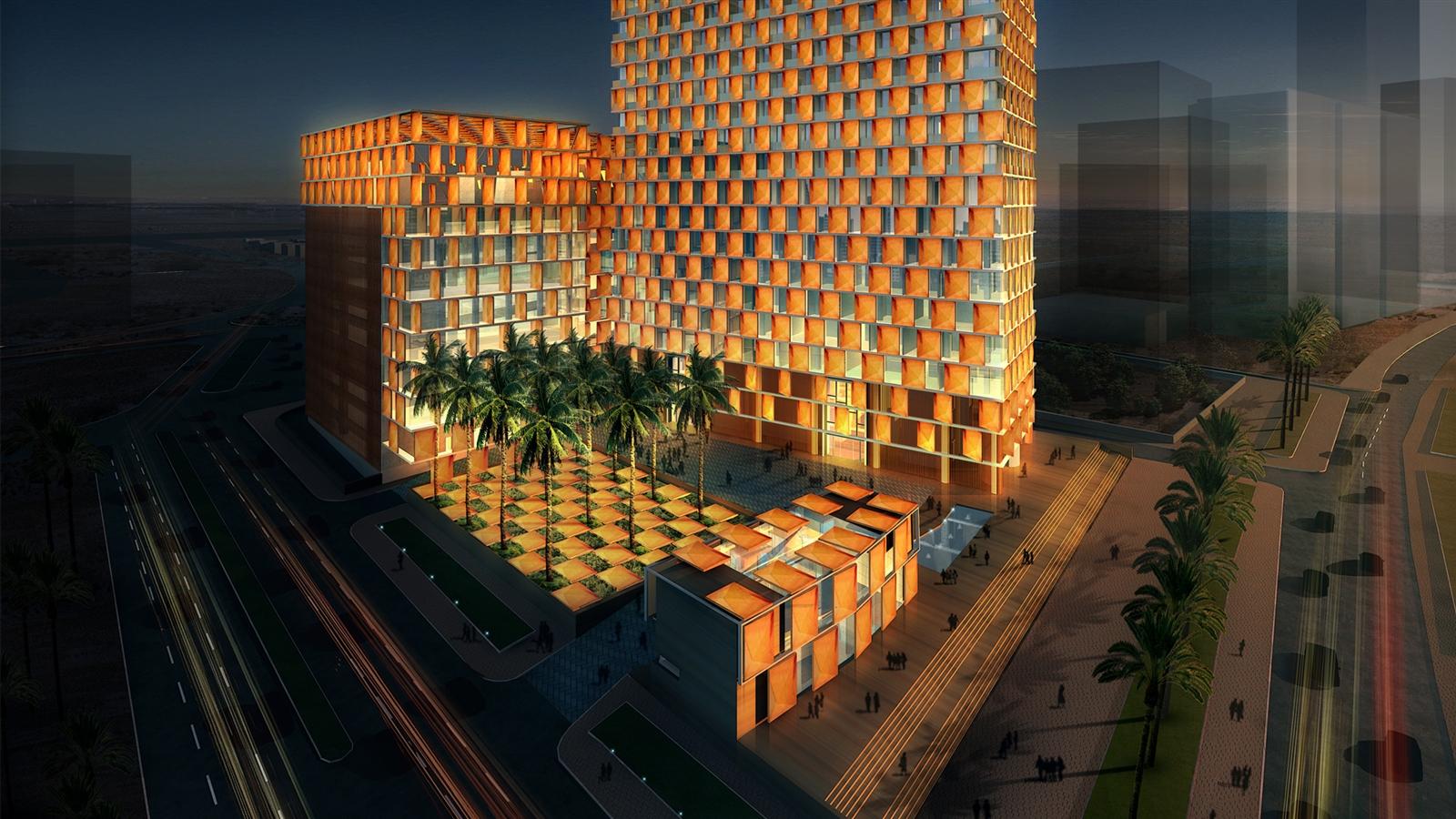Shangri-La Hotel – A High-Rise Building on Coral Rock
The Shangri-La Hotel is just a hundred metres from the Red Sea, located near what used to be a coral reef. The coral stone has large irregularly shaped voids and channels mostly filled with coral sediment. Constructing the high-rise building posed unique challenges that our experts overcame in planning and support services while laying the foundations.
The high-rise rests on a 3 m reinforced concrete slab built on 125 foundation piles at a depth of 50 m. The excavation pit to accommodate the basement floors enclosed single-layer tied-back anchored diaphragm wall measuring 400 m in length and 20 m in depth; a deep injection well at a planned thickness of 4 m was used to reduce groundwater intrusion, and thirty deep wells were installed to drain the construction pit and remaining water. Around 1,800 m³/h of groundwater was extracted and drained to the Red Sea via two underground DN800 pipes on lowering the water table to the required depth.
Solving specialised technical issues between designers and contractors as the resident engineer was an absolute project highlight, not least in terms of cultural differences between the Arabic and Western world.
With the aid of the Finite Element Method, we investigated the support and deformation behavior of the high-rise building. The 3D geotechnical model, in addition to the foundation and foundation structure, also determines the structural elements of the ground floor that are decisive for the load transfer. The calibration of the model and the derivation of material parameters for the higher-value substances used were based on pile loadings. In a sensitivity analysis, we examined the influence of cavities in the coral rock and determined the feather stiffness of the foundations for the structural design.
We were commissioned with design review, site management and local construction management and quality assurance in the excavation and foundation work. Our local team consisted of a resident engineer, supervisors, specialist engineers for geotechnical and foundation engineering, geologists, concrete engineers, secretaries and surveyors.

This impressive architecture constructed close to the Red Sea required a specialised geotechnical expertise.
Did you know?
Due to the chemical environment in the soil, the foundation piles had to be highly resistant against chloride and sulfate. The concrete mixtures available in Saudi Arabia do not fulfill these requirements for exposure. In a local laboratory, we tested different concrete mixtures and received a very good result by adding micro silica. The new concrete mixture showed a low permeability for both chloride and sulfate and meets European and American standards.
Assila Tower by Night

















